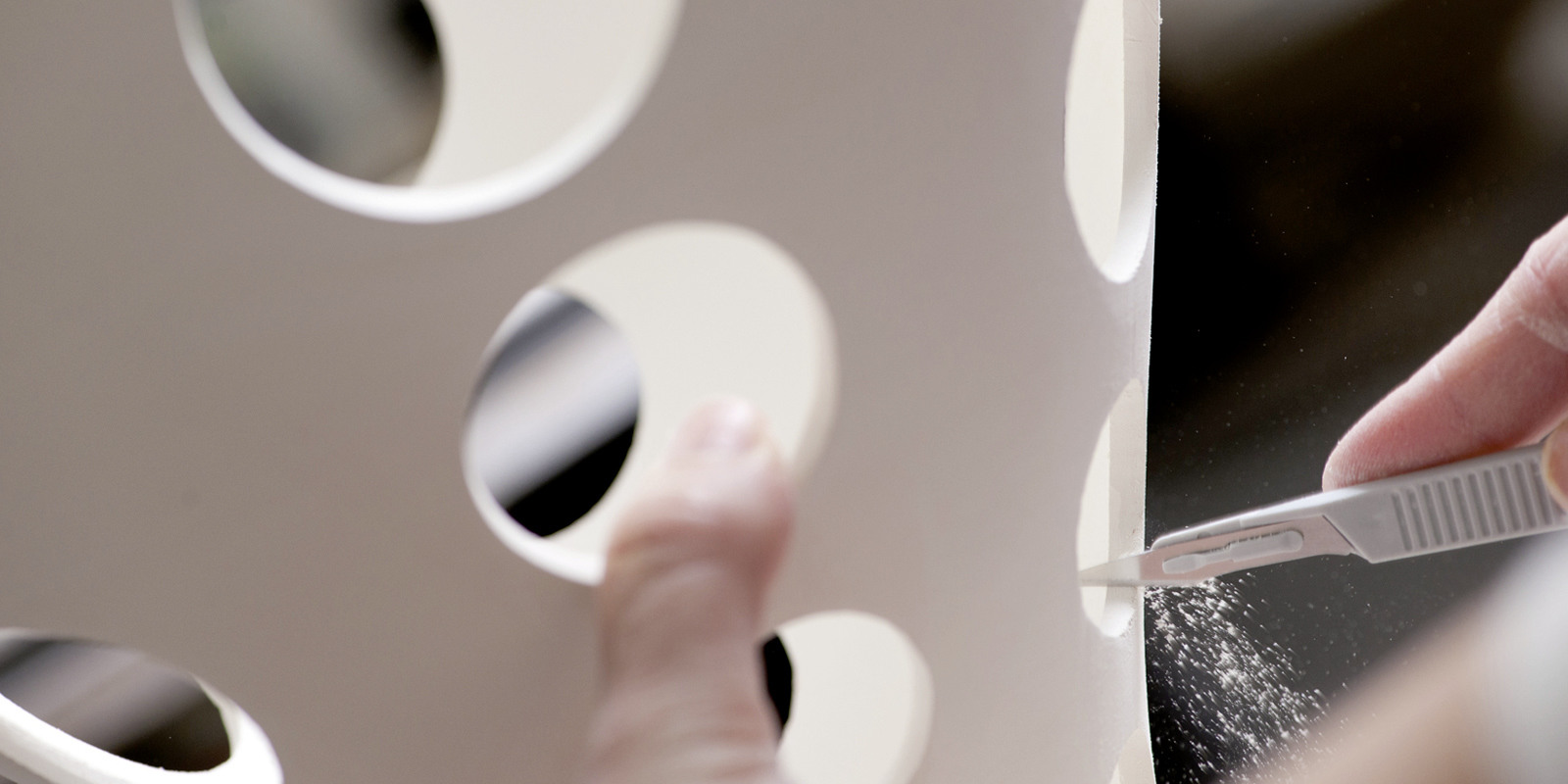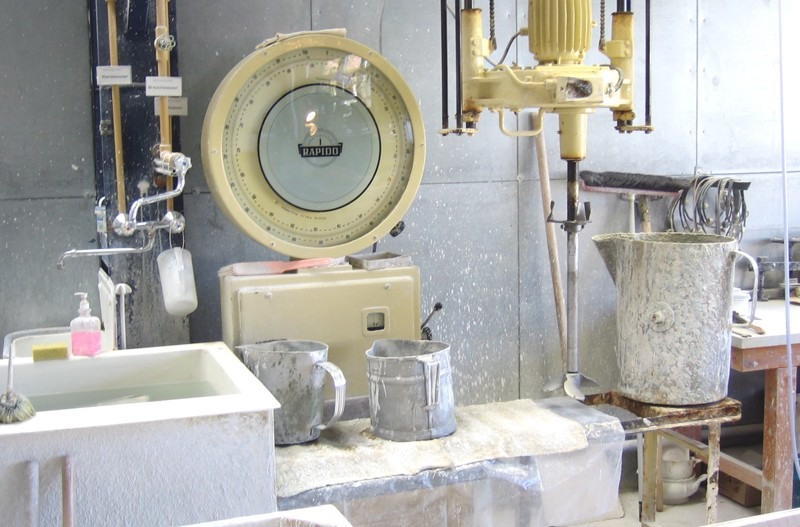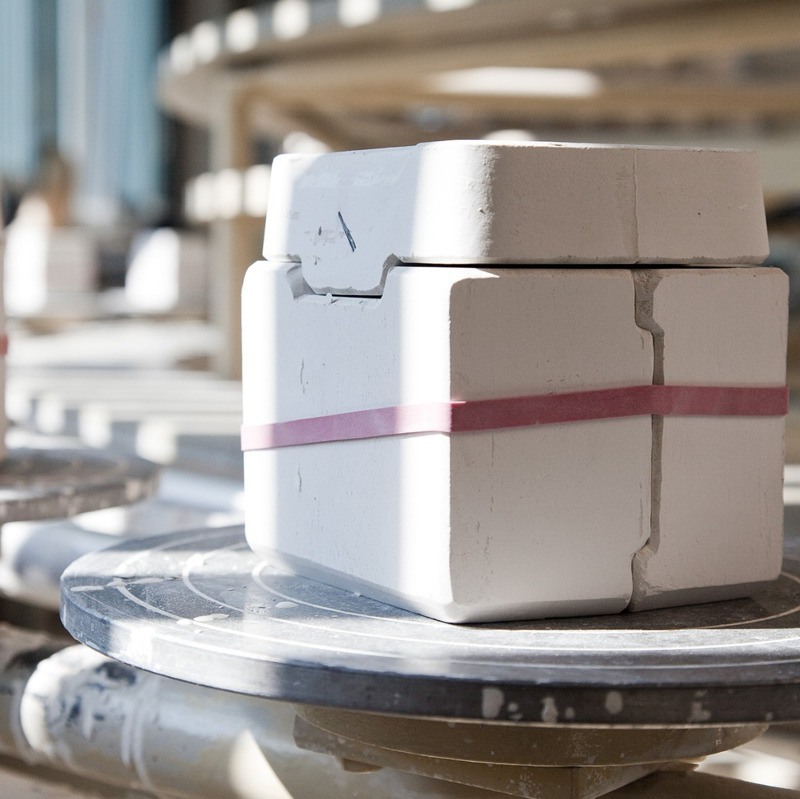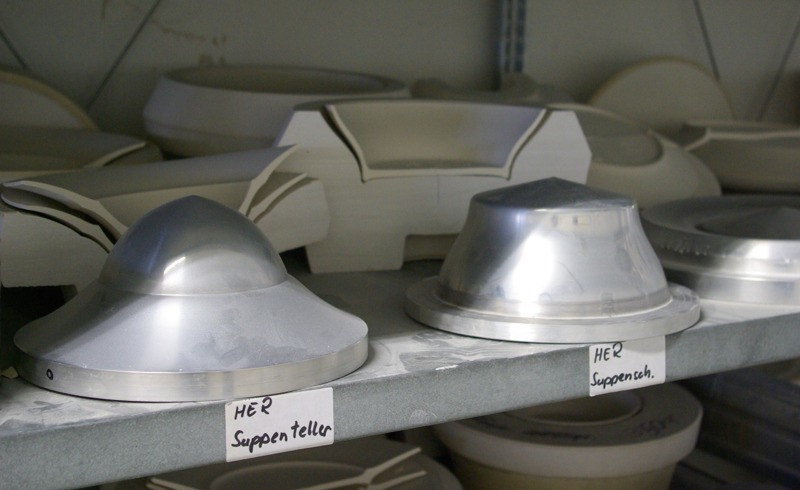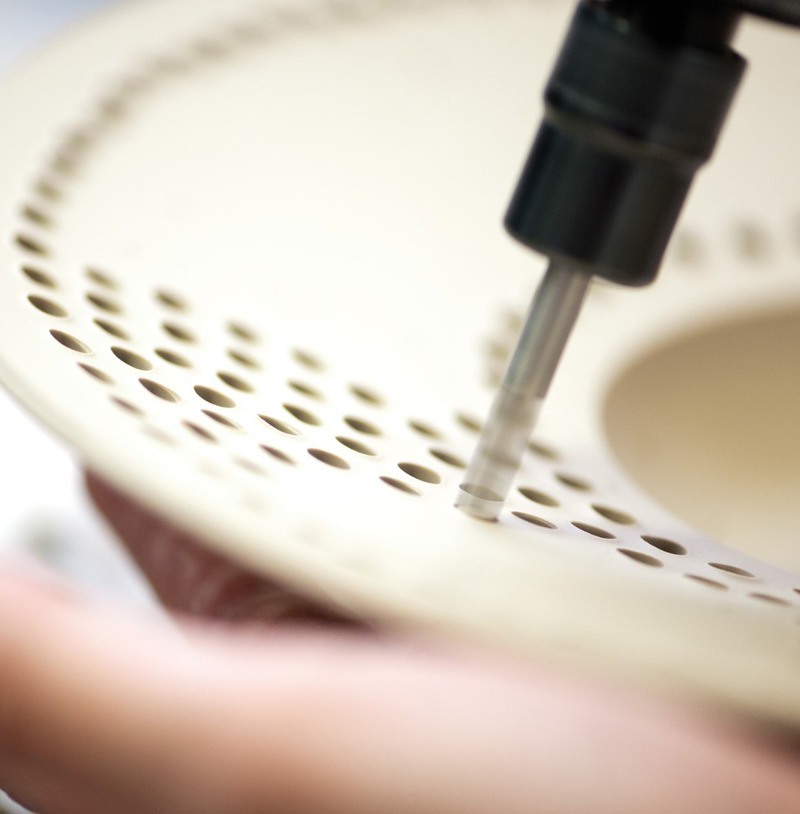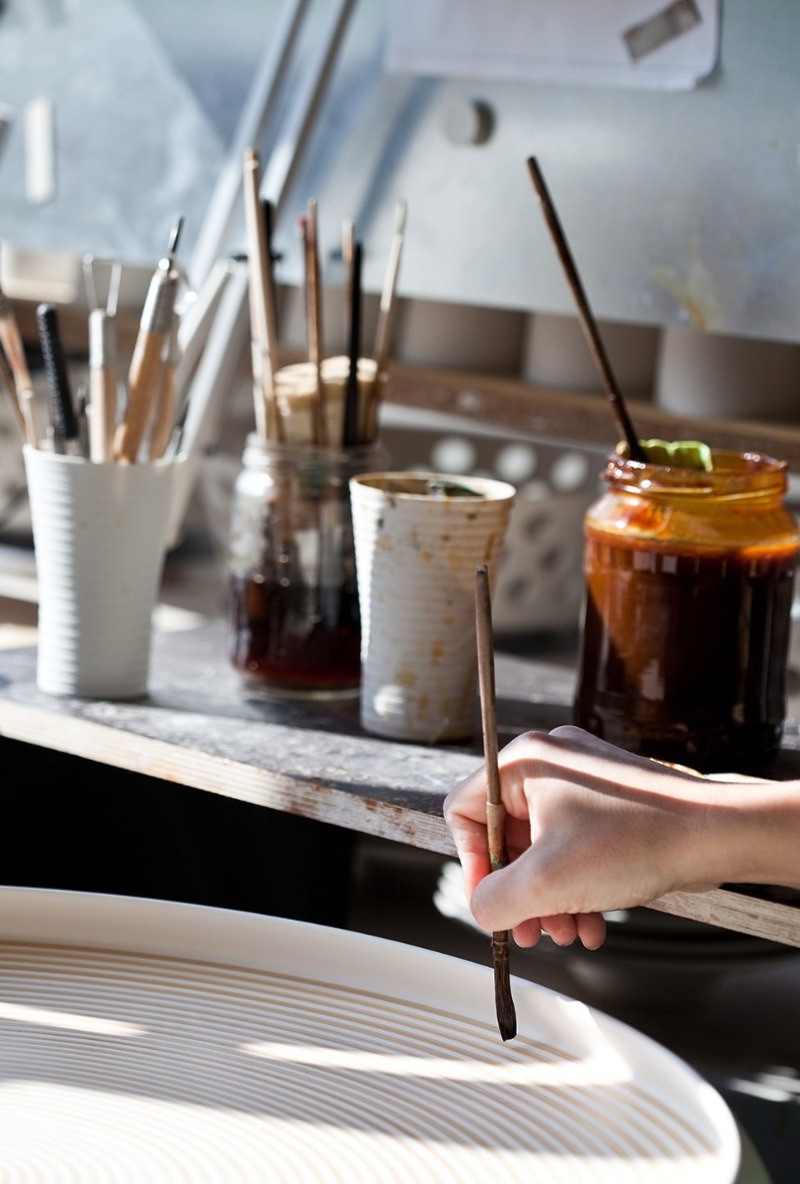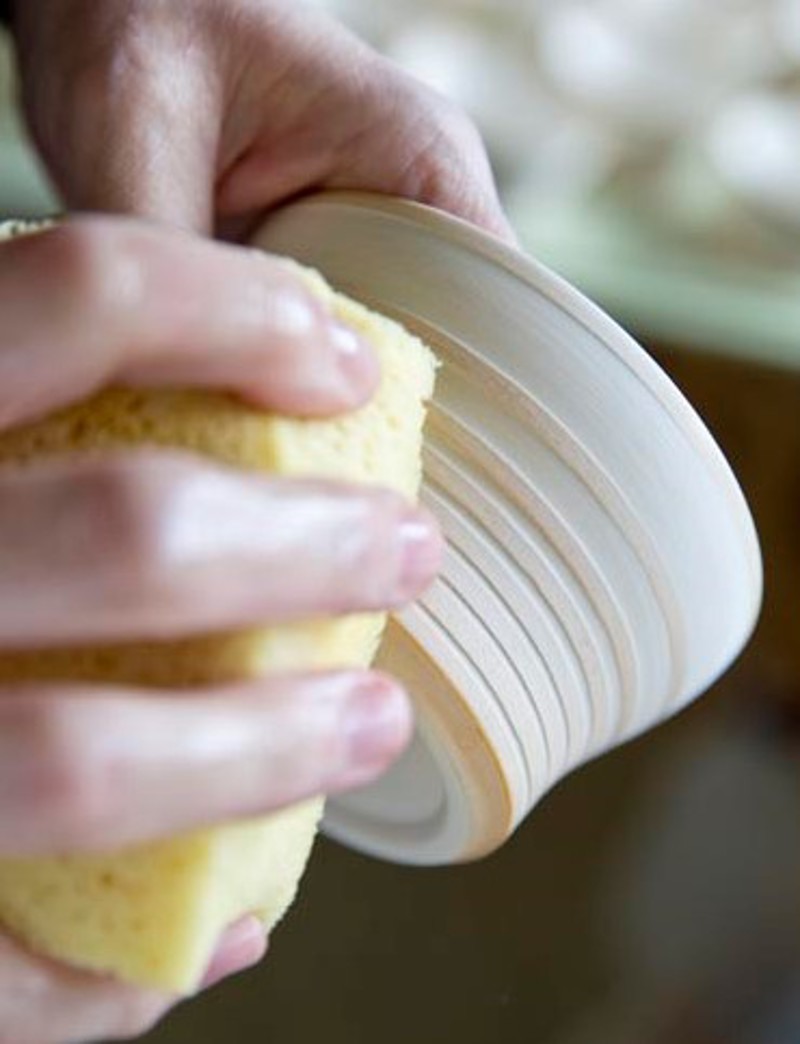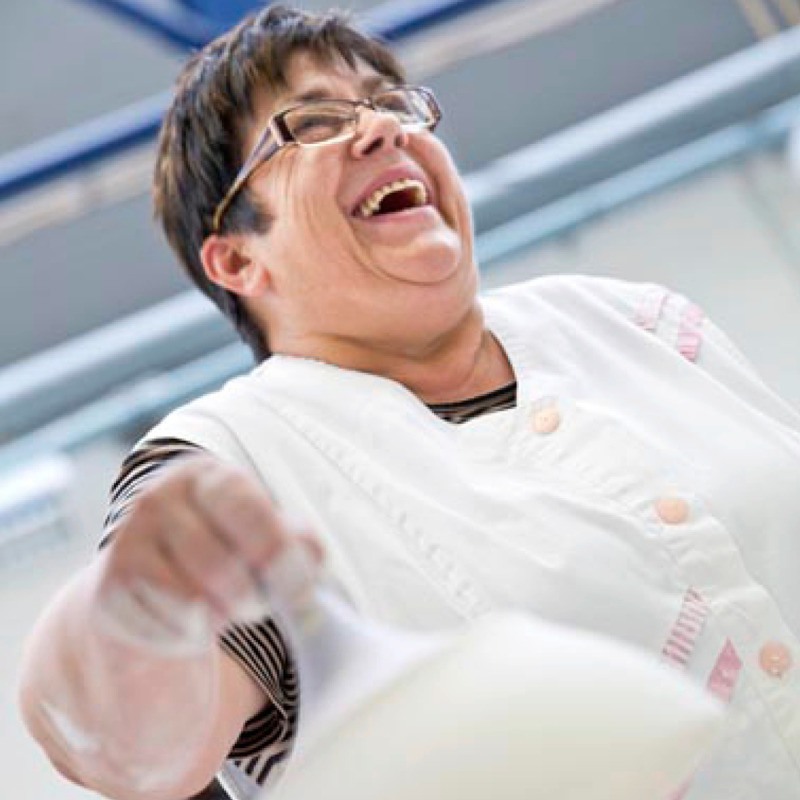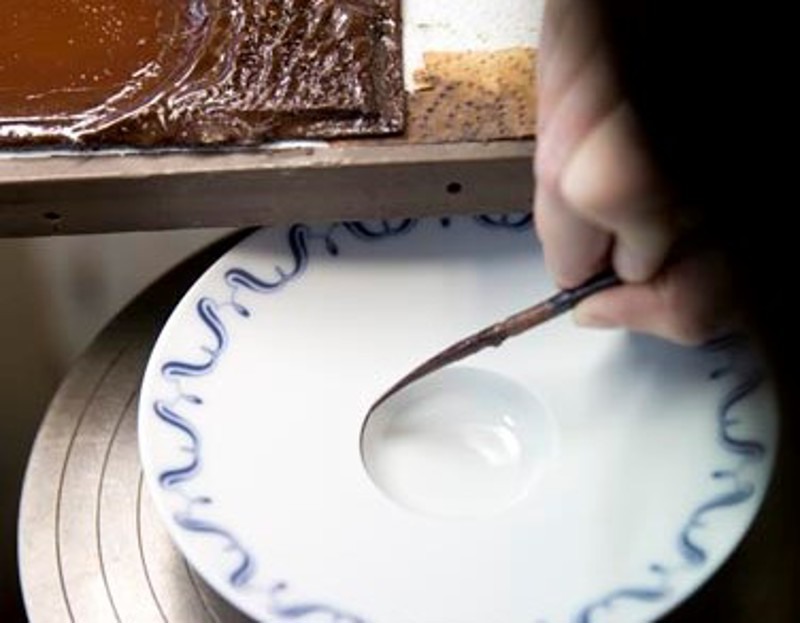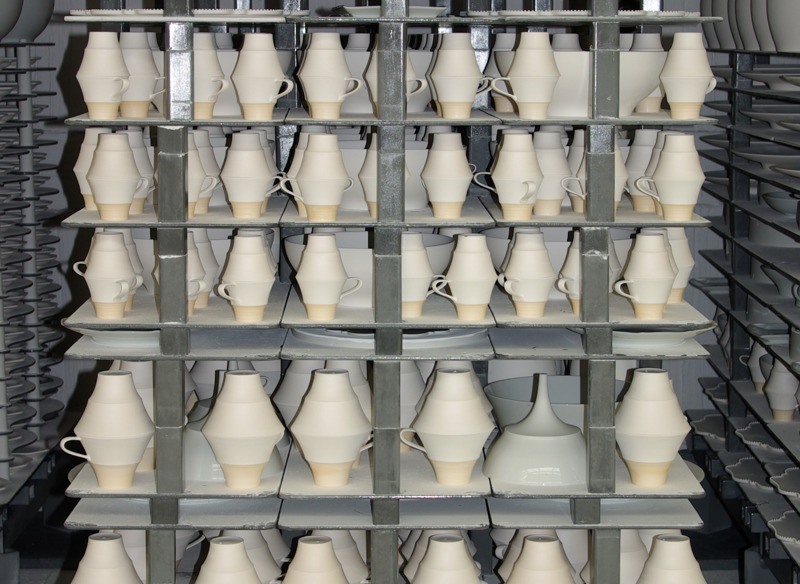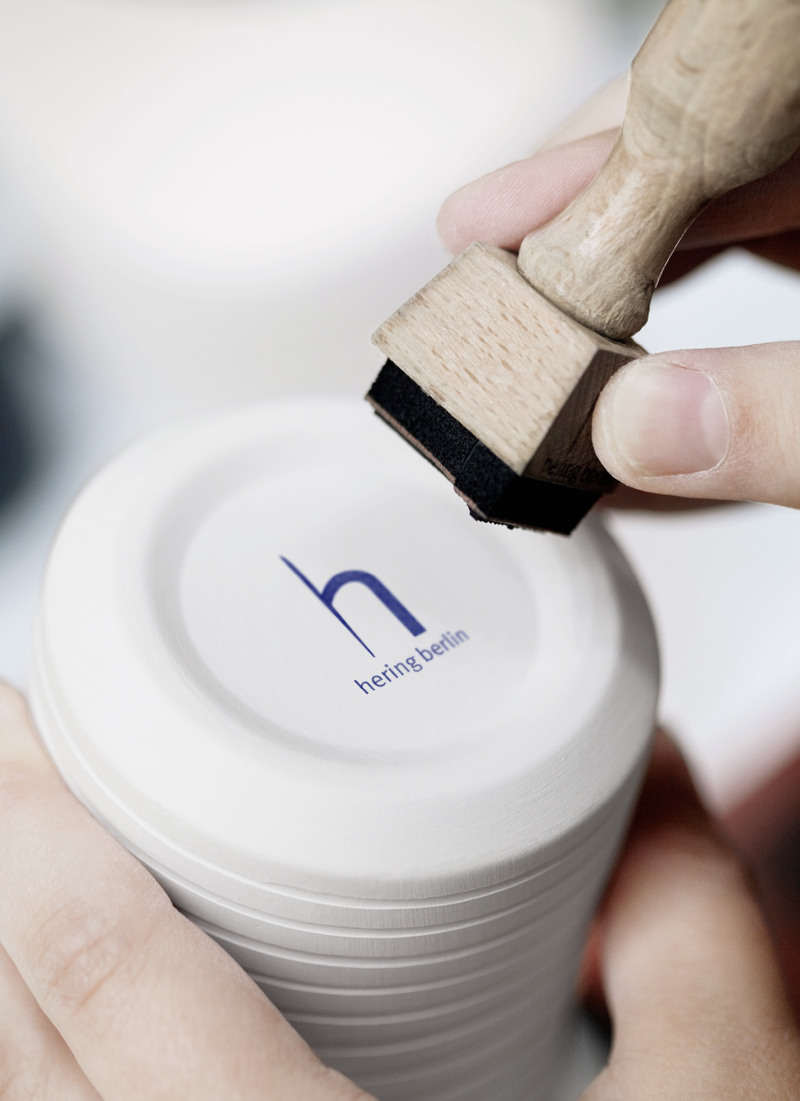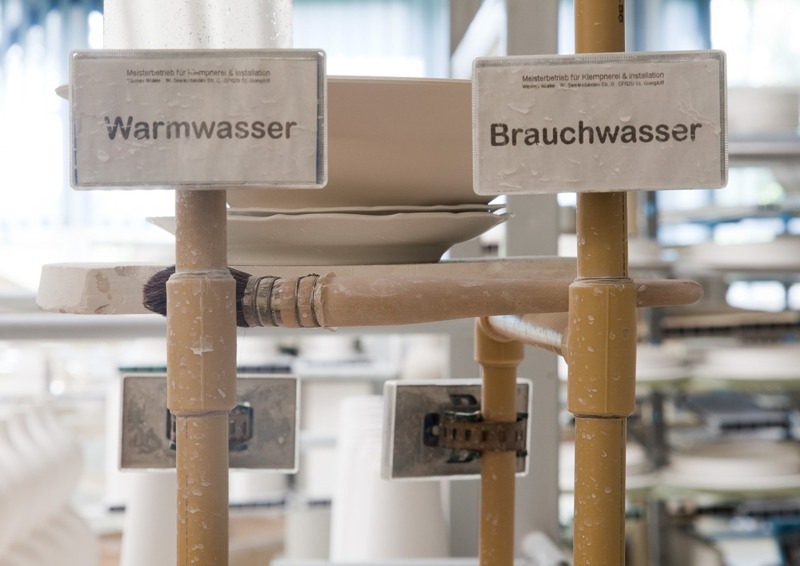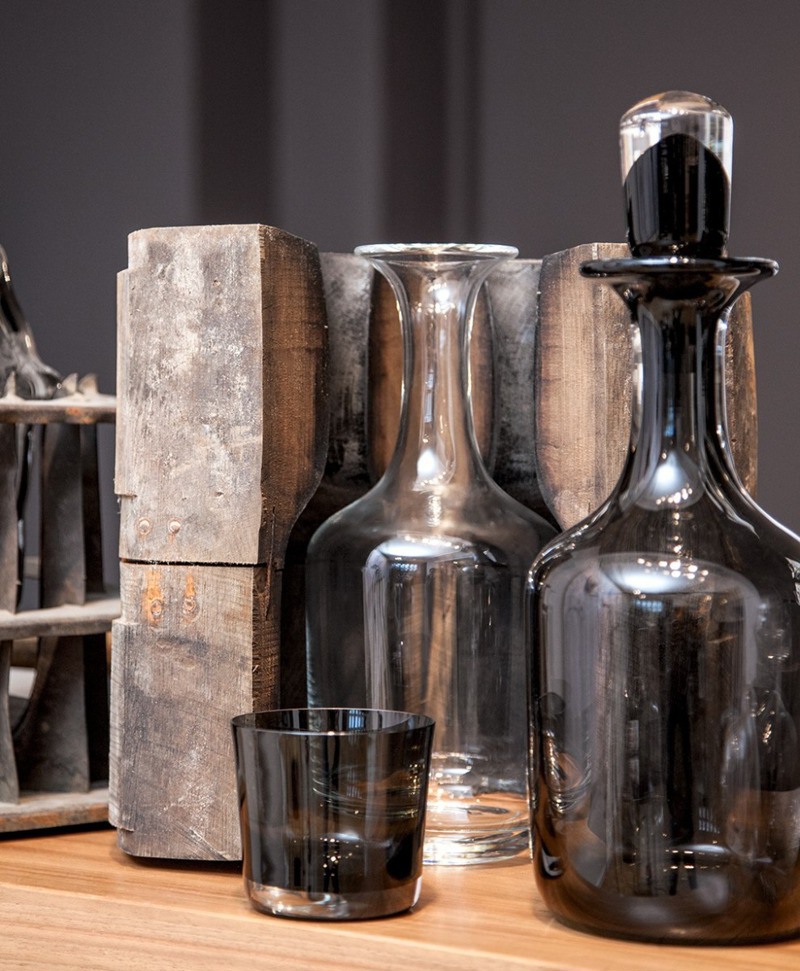Stefanie Hering's designs are unique, because each bears the artisans' touch
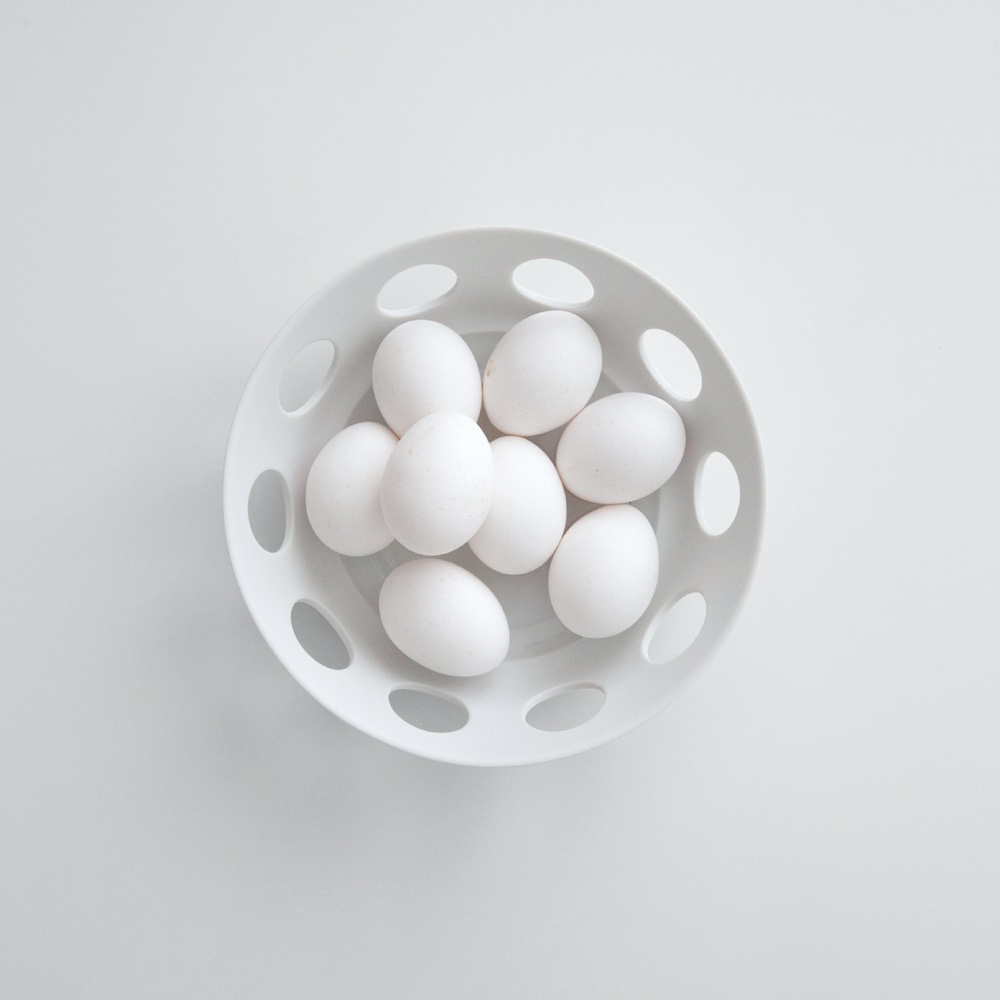
From the first design stages to the finishing details, every object bearing the Hering Berlin stamp is the result of elaborate processes of high craftsmanship. To carry out these processes, the specialists at the Reichenbach manufactory in Thuringia, where the porcelain objects are made, and at the Theresienthal glassworks, where the glass collections originate, make use of expertise and skills passed down over centuries. Nevertheless, it often takes several more years of training by designer Stefanie Hering before the porcelain experts can implement her designs perfectly. This is because Stefanie Hering, herself a trained and certified master ceramist, seeks direct dialogue with this precious material in all her designs: to perfectly bring out its beauty while also pushing the limits of what forms and decorative possibilities can be called forth.
Practical design development
The search for the perfect shape
It all starts with the mass
The journey, during which a mixture of kaolin, feldspar, and quartz – the mass – produces porcelain objects of exquisite beauty, begins in the moulding shop. This is where the mass is worked into different consistencies: for the turning shop, where plates and bowls are made on the potter’s wheel, the mass is claylike, so it is easy to shape by hand. For vessels and other hollow shapes – from vases to teapots – the mass (known as slip) needs to be liquefied.
Vessels: the great art of the hollow form
For narrow or voluminous vases, as well as the extravagant teapot shapes from Hering Berlin, multipart negative plaster moulds are made by hand and assembled in such a way that no liquid can escape. Then liquefied porcelain is poured into these moulds. The plaster extracts the water from the porcelain mass; the condensed porcelain sticks to the inside of the plaster mould. After a rest and drying phase, the plaster mould is carefully opened and the fragile vessel removed, its surface worked by hand, and later fired.
Of moulds and original moulds
Each plaster mould, made by the master artisans in Reichenbach by hand in an elaborate yet precise process, can only be used about 40 times, since it absorbs water during the drying process. Then a new plaster mould has to be made using an original metal mould.
Stability: a fine line
After the actual moulding, the porcelain objects are further processed. For example, for Stefanie Hering’s “Cielo” collection, various sized holes are punched or cut into the shaped porcelain with a drill or a knife. This is a very delicate undertaking, since the holes reduce the stability of the fragile, unfired porcelain. Making them is a manual balancing act that requires years of experience.
Surfaces: the chemistry has to be right
Product designer Stefanie Hering breaks new ground not only in porcelain processing but also in the design of her surfaces: for example, for the “Blue Silent”, “Silent Iron”, and “Silent Brass” collections, she works with earthylooking glazes specially created for these services. For the “PalmHouse X” line, she uses luminous colours that are applied to both glazed and bisque porcelain. And finally, for the “Pulse” collection, Stefanie Hering developed a decorating method based on the traditional material shellac.
With sponge and shellac
In keeping with the decoration specifications for “Pulse”, the oldest varnish in the world is used to cover fine parts of the shaped, unfired porcelain – any uncovered areas are then carefully rinsed by hand. The shellac dissolves without leaving residue during the firing process. The result is a refined porcelain object with a surface featuring two different haptic qualities and differing transparency.
Bisque: pure porcelain
All of designer Stefanie Hering’s creations, for which she has already received the Design Award of the Federal Republic of Germany, are characterised by dialogue with the material and working very closely with the core qualities of porcelain. It is only a logical consequence of this approach that the use of pure bisque porcelain has become a key trademark of her label Hering Berlin: porcelain in its most original, unadulterated form, not glazed, but with a matte, smooth surface, worked using special procedures in the Hering Berlin master workshops in Reichenbach. Though it looks fragile and extremely difficult to clean, is actually denser, harder, firmer, and more resistant to abrasion and scratches than glazed porcelain. Being fired at 1400°C closes all its pores. The porcelain forms its own glaze, so no dirt can penetrate it – which makes bisque porcelain from Hering Berlin ideal for use in dining services.
In the colour lab: the alchemy of beauty
In addition to a steady hand and years of training, it also takes extensive expertise to decorate porcelain and give it colour: many colours change their appearance completely when fired. And when painting on bisque porcelain, you cannot correct any mistakes once you have made a stroke. The artisans who implement Stefanie Hering’s designs in the Reichenbach manufactory are not only masters of their craft, they also develop new decoration variants and colour compositions in innumerable shades in close collaboration with the experimental designer, such as for the innovative floral collection “PalmHouse X” or the orientalinspired collection “Alif” (photo).
Firing: when the mass becomes porcelain
The kiln is where porcelain objects get their strength, as well as the dazzling white colour that characterises fired porcelain from Hering Berlin. In addition to the two usual firing processes - the bisque firing at 980°C and the glost firing at 1400° C, during which all porcelain objects shrink by 17% - up to three more firings are necessary for Hering Berlin porcelain, depending on the type and colour of the decoration. The new, specially developed glazes for collections such as “Silent Brass”, “Blue Silent”, and “Silent Iron” can also be fired at 1400°C, unlike the more heatsensitive conventional glazes. This high temperature makes them particularly resistant to abrasion and scratches.
Handcrafted at every step
From turning a plate in the moulding shop, to the elaborate decoration processes, to finishing the porcelain objects after firing - everything is done by hand at Hering Berlin. This finishing begins with polishing the precious metal surfaces of the “Polite Gold”, “Polite Silver”, and “Polite Platinum” collections and ends with carefully placing the pieces in the specially shock-proof packaging specifically developed for Hering Berlin. The artisans’ touch is present throughout the creation process of a Hering Berlin object, from beginning to end.
Sustainability
Porcelain objects from Hering Berlin are manufactured in workshops exclusively in Thuringia in Germany, keeping the distances travelled extremely short. The porcelain designers and artisans work in a resource-saving and energyefficient manner, no different from many generations of porcelain artists before them. Young people are also trained in the relevant crafts for the production of Hering Berlin objects – an important contribution to preserving, further developing, and thus future-proofing traditional cultural techniques and production processes.
The “Domain”, “Source”, and “Groove” glass series, as well as the “RayDance” chandeliers from Hering Berlin, are also produced in a manufactory steeped in tradition: the Theresienthal glassworks, which has existed since 1836. The glassblowers, grinders, and engravers there use their ancient skills, acquired through many years of experience, to create light objects and objects for daily use that are prime examples of both the centuries-old art of manual glassmaking and Stefanie Hering’s innovative design.





